Alaska is the largest state by land mass in the United States and has the most stunning outdoor views anyone could ask for. From the glorious Northern Lights to Denali Mountain, the state has some fascinating spectacles to see. That being said, one of the more interesting ones is the biggest impact crater in Alaska.
The last frontier state has a massive crater caused by a falling meteorite. Impact craters are rare, especially in the state of Alaska. Today, only 30 impact craters are located in the United States.
So, if you’re curious to discover the biggest impact crater in Alaska, don’t worry! We’ll dive deeper into Alaska, the crater, and the city next to it.
The Biggest Impact Crater in Alaska: Avak Crater
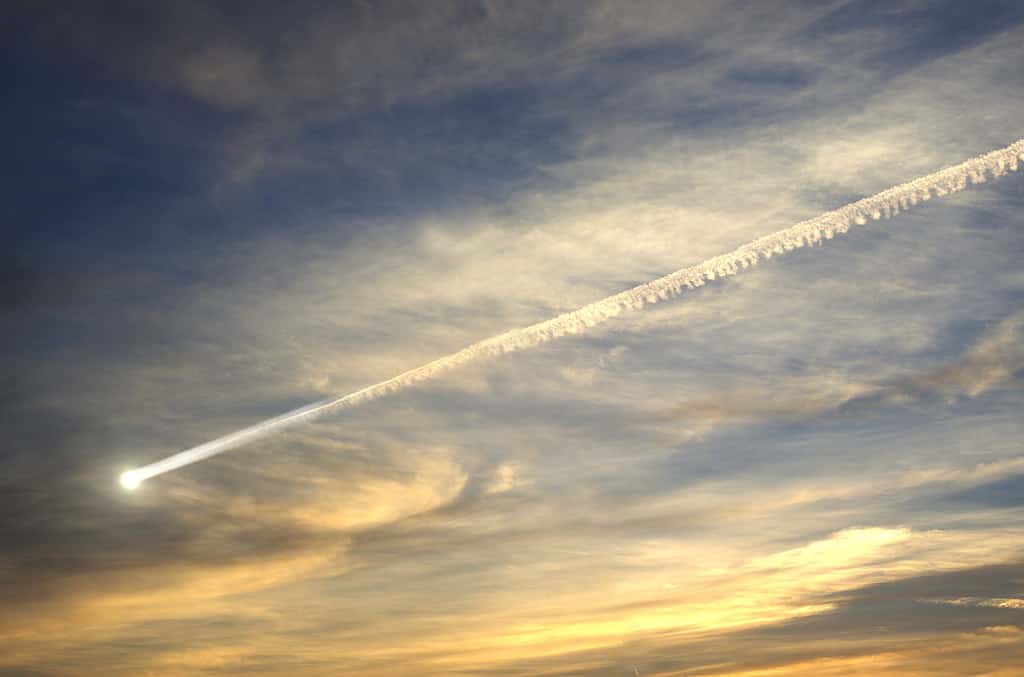
A flying meteor that has entered Earth’s atmosphere, which will cause an impact crater when it hits the ground.
©Krasowit/Shutterstock.com
As previously mentioned, there are 30 impact craters located in the United States, with only one being in Alaska. The state has frequent meter shower activity, with a few occurring yearly. When a meteor shower happens, it can produce up to 20 to 30 meteors per hour. As you can imagine, this is quite a sight, especially if you can be out under the open sky.
However, the Avak crater did not happen recently. In fact, it wasn’t even noticed until the U.S. Navy’s National Petroleum Reserve No four surveys discovered the crater. This occurred from 1943 to 1953 when the Navy searched for materials.
During their survey, the Navy found petroleum and started drilling to get the fuel. They then hit a deformed rock that looked, unlike any other geographic rock. After digging around 4,019 ft of depth, a pattern of the impact origin was discovered.
However, it wasn’t until 1995 that the Geological Survey of Canada and the U.S. Geological Survey discovered the biggest impact crater in Alaska due to mineralogic features such as planar deformation features. The survey’s then determined that Avak was a meteorite impact structure.
About Avak Crater
The crater is a subcircular structure that is 7.5 miles in diameter and 0.62 miles in depth. Unlike other impact craters, Avak is unique as it has no surface expression due to being created around 3-95 million years ago. Since so much time has passed, the swampy tundra has covered the impact crater’s markings.
We would have never known it existed without the surveys being conducted and the excavation sites. Due to the surveys and drilling, meteoriticists have been able to identify the meteor’s markings properly. This makes it an amazing wonder that the crater was even discovered in the first place.
But how did meteoriticists determine it was an impact crater if it happened so long ago? At first, there wasn’t much evidence, but later scientists found multiple sets of PDFs in quartz and shattered cones. Add in the fact that there was also morphology, breccias, shock mosaicism, and planar fractures in the quartz, and it was determined to show all signs of being an impact crater.
Aside from that, the Avak structure traps natural gas in South Barrow and East Barrow gas fields. Over time, the crater has trapped around 37 bcf of gas inside Jurassic sandstones.
Where Is Avak Crater Located?

The arctic tundra in spring and summer where Avak Crater was found.
©MarmotChaser / CC BY 2.0 – License
Avak Crater is located a few miles southeast of a small town called Utqiagvik, AK. The town is commonly known as Barrow, but as of 2016, the residents switched the town’s name to the official Inupiaq name. It’s part of the Arctic Circle, a polar circle unique to the northern poles.
To put this in perspective, the small town is located in northern Alaska near the north pole. It’s nestled on the Arctic Ocean coastline and is the state’s largest Inupiaq settlement. The crater is located only 7.5 miles southeast of the town.
The surrounding area is full of gas fields, and the only activity is either dig sites or arctic animals wandering around. To the Northwest of the Avak crater is the South Barrow Gas Field, to the East is the East Barrow Gas Field, and then to the South is the Stulk Gas Field.
About Utqiagvik, Alaska
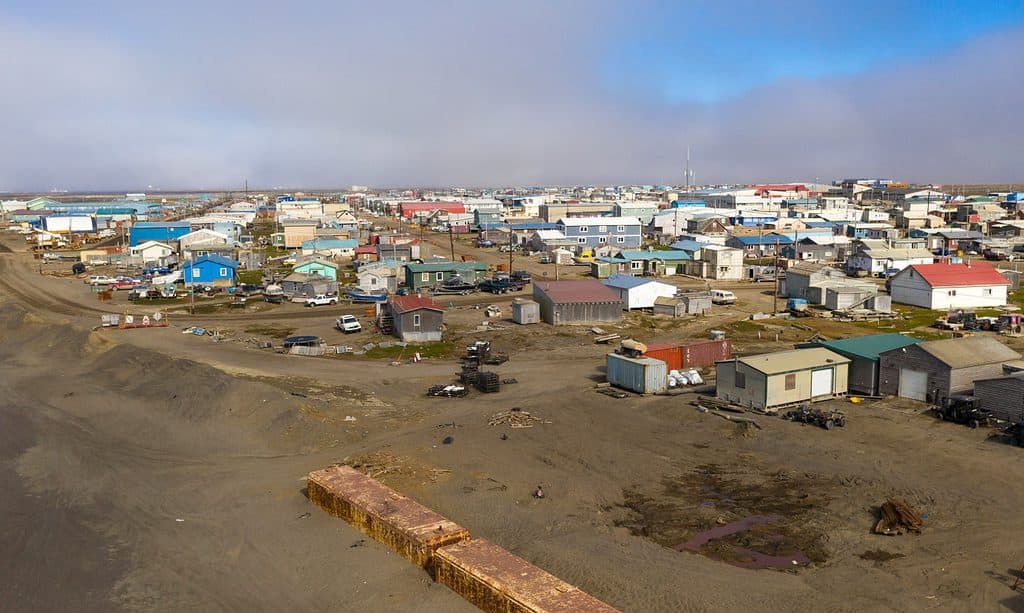
The small town of Utqiagvik, AK, also previously known as Barrow, in 2016.
©iStock.com/ChrisBoswell
Utqiagvik, formerly known as Barrow, is the port hub town for nearby villages in the Northern Slope Borough. You can think of it as the main city that connects all the villages in the surrounding area. Locals tend to come into the town, as it has resources that other villages may lack. This includes doctors, shops, etc.
The town has a small population of only 4,927 and is the 12th most populated city in the state. The town is known for being the northernmost town in the United States. Most residents are Alaska natives, also known as Eskimos, but others have come to work jobs.
The town was originally the home to the Inupiat people, an indigenous Alaskan native tribe. However, it has become a popular location for other tribes and people from all over the world. This happened years ago, as it was the oldest permanent settlement in the United States.
Aside from that, the town is known as the “Gateway to the Arctic” due to visitors being fascinated with the village’s traditional whaling history. A giant whalebone arch structure even signifies the town’s whaling history. The village relied on hunting whales for food, clothes, tools, and even medicine.
Avak Crater Wildlife
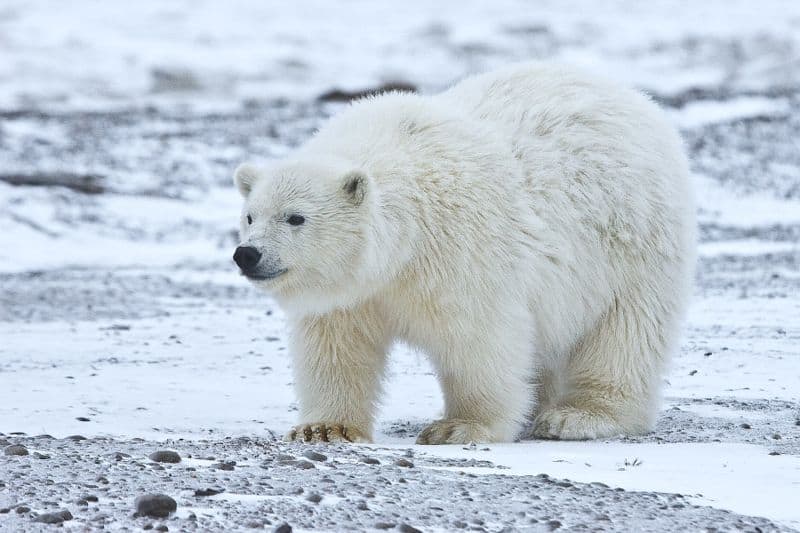
A snow polar bear roams the Arctic Circle.
©Alan D. Wilson, CC BY-SA 3.0, via Wikimedia Commons – License
The crater is surrounded by ice and snow for around nine months of the year, which means there isn’t much wildlife at the North Pole. However, many types of animals are active in the area during the spring and summer. This includes birds, mammals, and fish.
The people of Barrow will often take advantage of this time of year and use it as their hunting grounds. During winter, it’s extremely difficult to get to Barrow other than by plane. So, the village stocks up on meats from various animals.
Avak Crater Bird Life
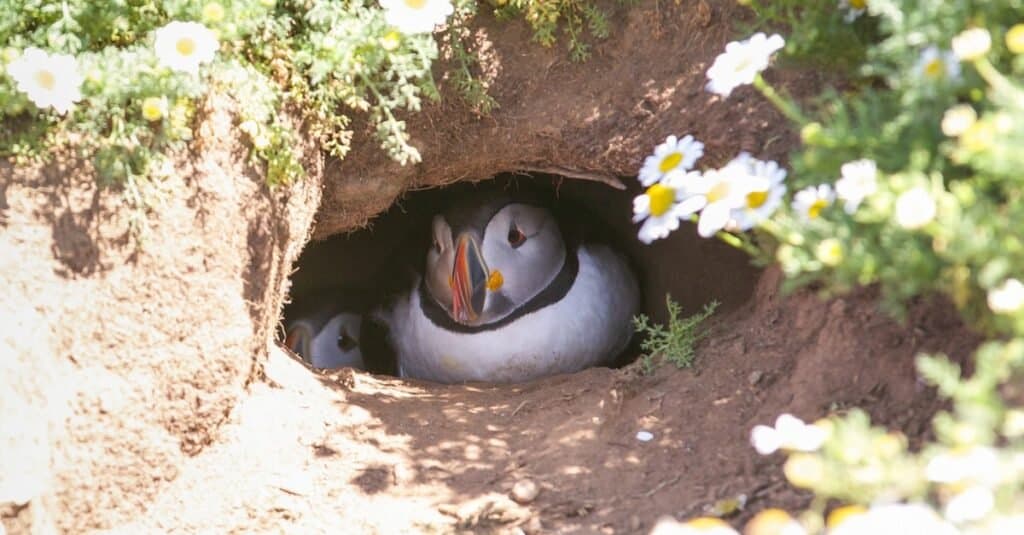
A puffin taking refuge inside of the ground.
©iStock.com/Henfaes
In Inupiaq, Barrow is often called Ukpeagvik, which means “the palace where we hunt snowy owls.” That’s because there is an abundance of snowy owls in the area, with over 280 species of birds living in the Arctic Circle, including buntings, falcons, snow geese, and more.
The Inupiaq people hunt for food, which includes the beautiful white snowy owls. However, this has become less common due to food being shipped in.
Another one of the world’s rarest birds is the puffin, which live in Northern Alaska. You might also see King Elder, one of the only Arctic ducks out there.
Avak Crater Aquatic Mammals & Fish Species
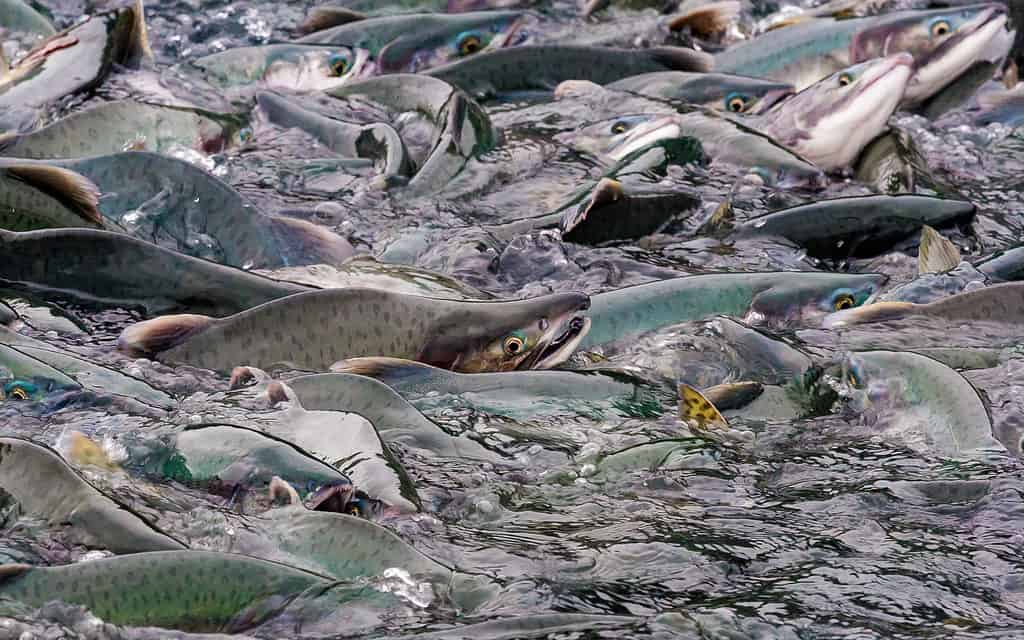
Pink salmon crowded in Alaska.
©Troutnut/Shutterstock.com
Aquatic life is also very active at all times of the year. Avak Crater is only a short distance away from the northern Arctic Ocean. Due to this, there are a lot of aquatic species unique only to arctic areas.
Bowhead and Beluga whales migrate throughout the area and reside on the shorelines. Aside from that, there are walruses, bearded seals, and more.
Some of the more common sighted fish are the following:
- Northern Wolffish
- Bream
- Salmon
- Roach
- Dace
- Rudd
- Pike
- Brown Trout
- and more.
As you can see, Utqiagvik is a hub for the surrounding villages and aquatic species.
Avak Crater Land Mammals
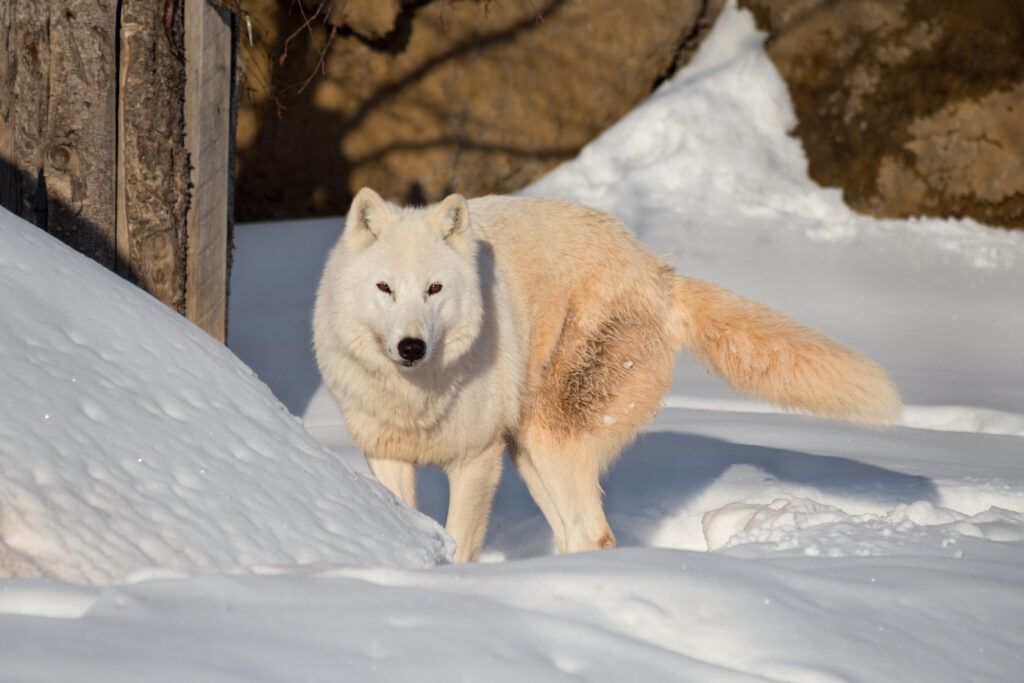
Arctic wolves with white fur and only known to Arctic regions.
©Tikhomirov Sergey/Shutterstock.com
Other than aquatic mammals, there are also land mammals that roam about the winter wonderland. One of the more “cute” mammals you will see are the Arctic fox, Arctic Stoat, and Ringed and Bearded Seals.
However, there are also more unique mammals such as Polar Bears, Alaskan Tundra Wolf, Barren-Ground Wolf, and Northern Moose. However, the most common is Caribou.
These mammals are mostly present in summer and spring, but some stick around in the winter. Most arctic animals either hibernate or migrate to other regions when the temperature drops too low. However, certain species have evolved to withstand the harsh winter environment.
Where is Avak Crater Located on a Map?
Located about 12 km (7.5 mi) southeast of Utqiagvik, Alaska, United States, Avak is an impact crater that marks a significant geological event in the region.
Here is Avak Crater on a map:
The photo featured at the top of this post is © Grindstone Media Group/Shutterstock.com
Thank you for reading! Have some feedback for us? Contact the AZ Animals editorial team.






